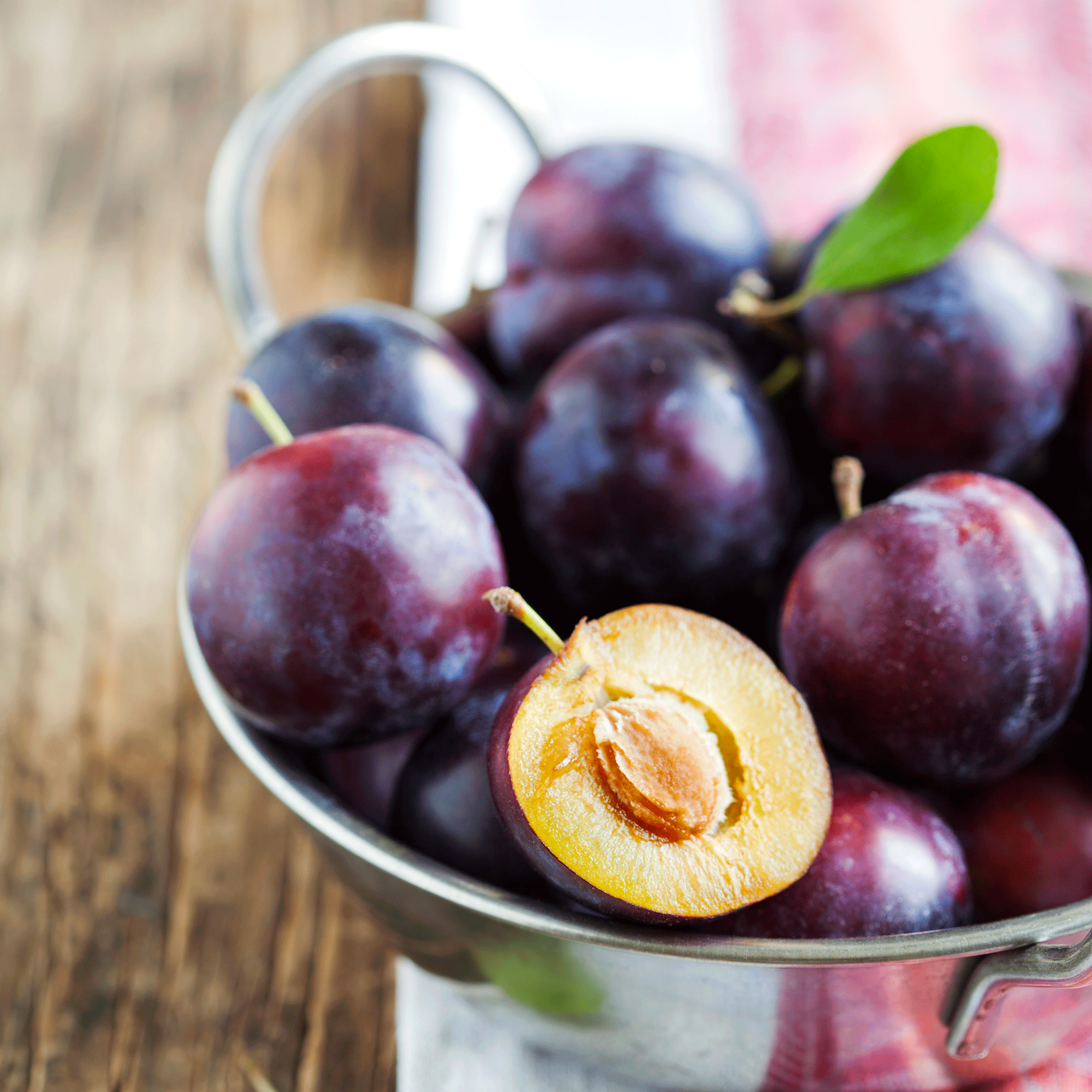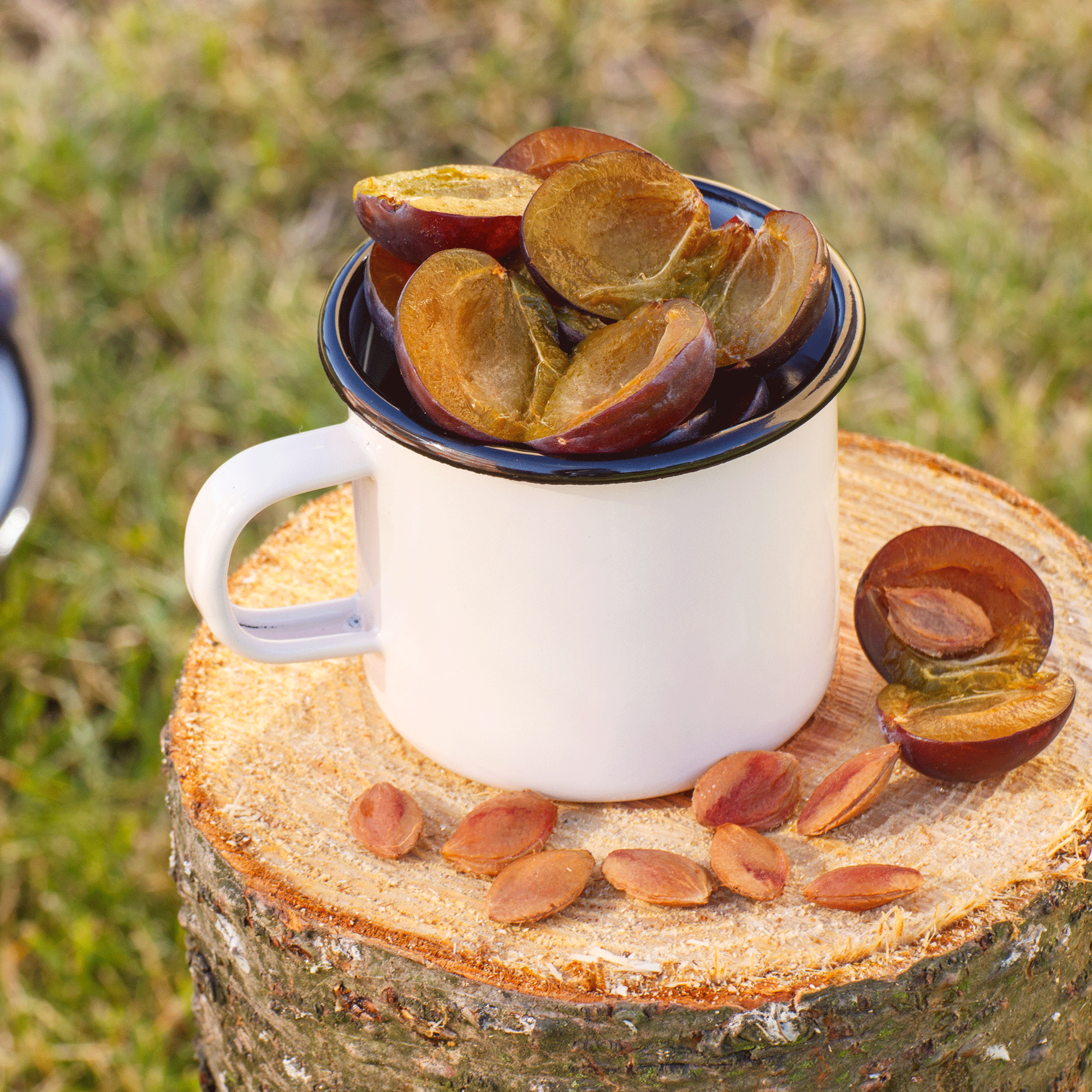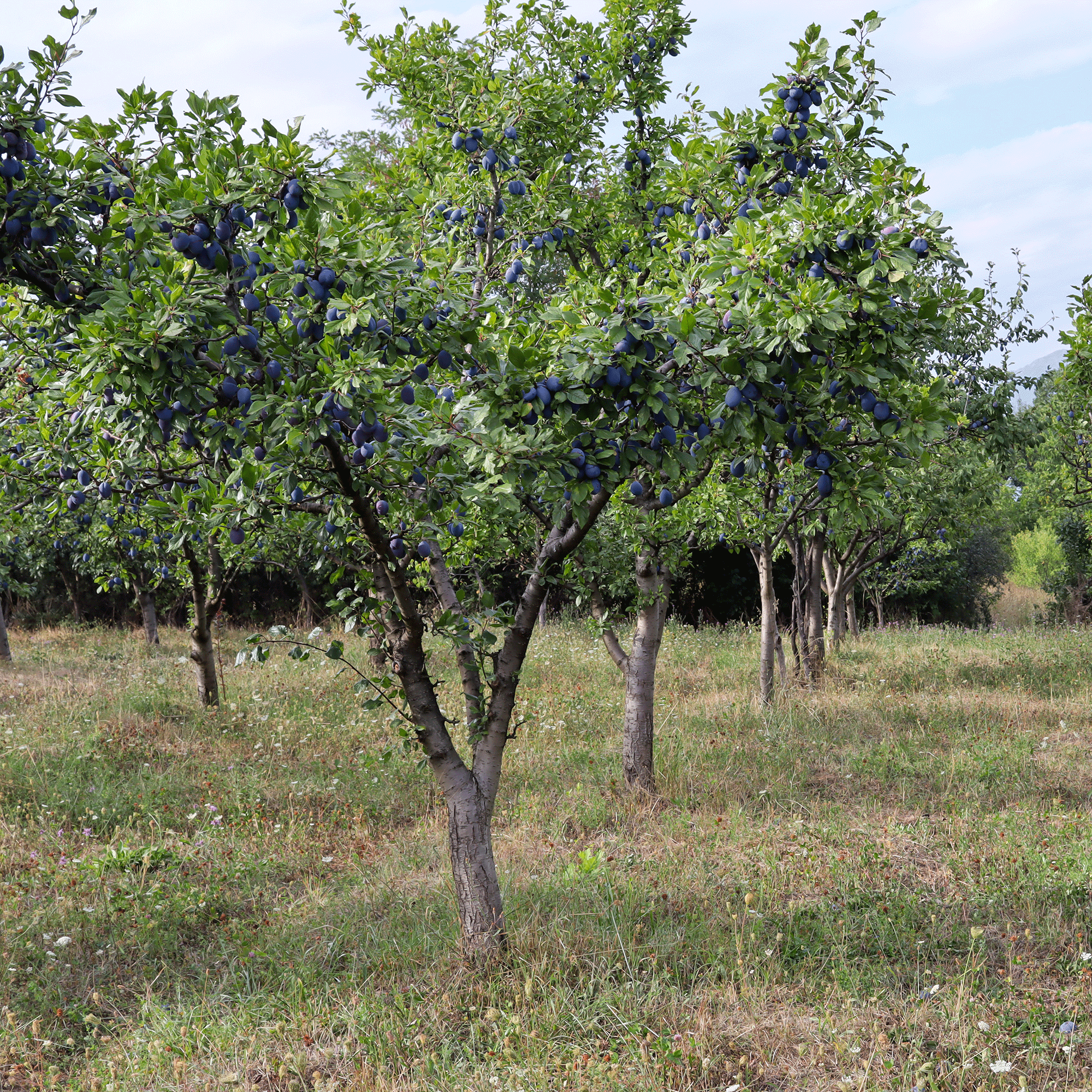
If you’ve ever considered growing your own plum tree, particularly if you can’t get enough of the sweet, juicy fruit, did you know that you could actually grow a plum tree from a plum’s stone?
Essentially, what you’re doing when you grow a plum tree in this manner is propagating and propagation is easily one of our favourite budget-friendly gardening techniques. For little to no money, you can take what would have otherwise ended up in the compost bin and use it to grow another plant, which also saves you from having to go out and buy a mature plum tree.
How to grow a plum tree from a stone
However, ‘growing plum trees from a stone will often produce a very different fruit when compared to the original plum,’ outlines Fiona Jenkins, MyJobQuote.co.uk's gardening expert. ‘This can sometimes be for better or worse.’
But if you don’t mind this, ‘they are quite easy to grow and will usually produce around 60cm of growth each season,’ affirms Fiona. You just need to follow some important steps to grow your very own plum tree in your garden or outdoor space.

What you’ll need
- Plum stones (or pits)
- A nutcracker; if you don’t already have one in your kitchen drawer, this Tala Nutcracker from Amazon is a great price
- Well draining soil; try the Westland Houseplant Potting Mix from Amazon
- A glass jar
- Planting pots; this pack of ten Verve Lei Terracotta Plastic Circular Grow pots from B&Q is a real bargain
Step-by-step
1. Collect and wash your plum stones
As is to be expected, you’ll want to start with some plum stones, or plum pits as they are also referred to. Take your plum stones and make sure to wash them thoroughly.
Then you’ll want to place them somewhere to allow them to dry out – a windowsill is an ideal spot. Allowing them to dry out will shrink the seeds in the plum stone, ‘making them much easier to extract,’ according to Fiona.

2. Extract and check the seeds
Once the stones have dried out fully, it’s time to take a nutcracker to crack them open. Being careful not to damage any in the process, you can begin to extract the seeds from inside the stone.
‘Next, place the plum seeds in a glass of water. If the seeds sink, they can be germinated. However, if the seeds float, they unfortunately won’t grow,’ Fiona suggests. For those seeds that are viable, keep them in the glass of water overnight.
Alternatively, you can also put the plum seeds in the glass of water overnight and then in the morning, remove the ones that are floating, to essentially do the same thing. Whichever technique works best for you.
3. Plant the seeds
‘The next day, remove the seeds from the water and place them into a jar filled with moist compost,’ says Fiona. Then it’s a bit of a waiting game. You’ll want to seal the jar and clear some space for it in your fridge.
It will stay in the fridge for around six to eight weeks or until you start to see some roots start to appear.

4. Pot the rooting seeds
Then it’s time to pot the seeds. Take the seeds out of the jar and transfer them over to a plant pot filled with good draining soil. ‘If you are planting in pots, you should only plant one seed in each of the pots,’ Fiona adds.
Place them somewhere cool and bright and when it comes to watering them. You want to make sure they are damp, but not overwatered.
Now all you have to do is wait for it to grow, and keep potting it up as it outgrows it's pots. In about three years your little tree should start to bear fruit, but it won't until five years that'll you be able to get a proper bump crop.

FAQs
How long will it take for fruit to start growing on your plum trees?
‘In general, you can expect fruit to start growing on your plum trees within 3 years since the date of potting. The tree should reach its full cropping capacity after around 5 years,’ suggests Fiona.
So, you may not see the literal fruits of your labour for some time but given that it won’t have cost you much at all, either in terms of expense or effort, growing your own plum tree from a stone is definitely worth trying, particularly if the stone fruit is one of your favourites to consume on a regular basis.







